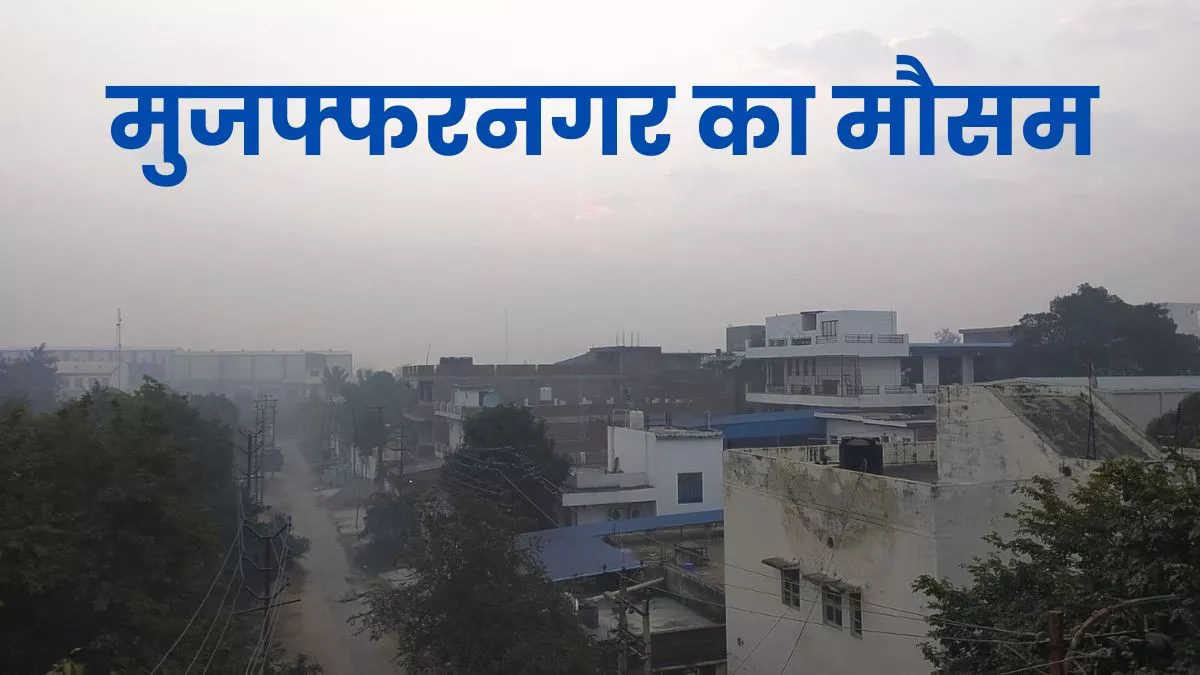Muzaffarnagar, located in the northern part of India, experiences a diverse range of weather patterns throughout the year. The region’s climate is influenced by its proximity to the Himalayan foothills and its location in the Indo-Gangetic plains. Understanding Muzaffarnagar weather is essential for residents, tourists, and anyone planning to visit. In this article, we will take an in-depth look at the climate, seasonal variations, and typical weather patterns in Muzaffarnagar.
Overview of Muzaffarnagar’s Climate
Muzaffarnagar features a humid subtropical climate, which is characterized by hot summers, a monsoon season, and relatively mild winters. The city’s weather can vary significantly from one season to another, making it essential to be prepared for the fluctuating temperatures. Understanding the city’s weather can help you plan outdoor activities or adjust your wardrobe accordingly.
Summer in Muzaffarnagar (March to June)
Hot and Dry Conditions
Summer in Muzaffarnagar lasts from March to June, with temperatures soaring above 40°C (104°F) in May and June. These months are typically characterized by intense heat, dry air, and long days. The humidity levels remain low during the early summer months but increase as the season progresses.
Key Weather Factors:
- Average temperature: 35°C to 40°C (95°F to 104°F)
- Humidity: Moderate to high, especially towards the end of the season
- Rainfall: Minimal in early summer, with occasional pre-monsoon showers towards June
During this period, people often seek indoor activities or rely on cooling systems such as fans and air conditioners. Be sure to stay hydrated and avoid long exposure to the sun during the peak afternoon hours.
Monsoon Season in Muzaffarnagar (July to September)
Heavy Rainfall and Cooler Temperatures
The monsoon season in Muzaffarnagar begins in late June or early July, bringing with it much-needed rainfall. The weather during this season is significantly cooler compared to the sweltering heat of the summer months. The city experiences high humidity during the monsoon, making the air feel heavier and more oppressive.
Key Weather Factors:
- Average temperature: 30°C to 35°C (86°F to 95°F)
- Humidity: Very high
- Rainfall: Frequent, with heavy downpours
The monsoon season brings relief from the heat but can also lead to flooding and disruptions in daily life. Roads may become waterlogged, and travel can be slow due to the wet conditions. It’s advisable to carry an umbrella and wear waterproof footwear during this time.
Winter in Muzaffarnagar (October to February)
Cool and Pleasant Weather
Winter in Muzaffarnagar is from October to February, with temperatures dropping significantly during the nighttime. The days remain pleasantly cool and are perfect for outdoor activities. January tends to be the coldest month, with temperatures occasionally dipping to around 5°C (41°F) at night.
Key Weather Factors:
- Average temperature: 10°C to 25°C (50°F to 77°F)
- Humidity: Low, with clear skies
- Rainfall: Very little, with dry conditions
The winter months are considered the best time to visit Muzaffarnagar, as the weather is not too hot or humid. The cool breeze and clear skies provide an excellent backdrop for sightseeing and exploring the city.
Best Time to Visit Muzaffarnagar
The ideal time to visit Muzaffarnagar is during the winter months (October to February) when the weather is mild and comfortable. The pleasant temperatures make it easier to explore the city’s landmarks, parks, and markets without the discomfort of extreme heat or heavy rainfall.
If you enjoy the monsoon atmosphere, the months of July to September might also appeal to you. However, be prepared for occasional disruptions due to rain, and ensure that your travel plans are flexible.
Muzaffarnagar Weather for Agriculture
Muzaffarnagar, being an agricultural hub, also experiences weather patterns that directly affect farming. The city’s agricultural activities rely heavily on the monsoon season, with farmers depending on the rains to irrigate their crops. The summer and winter months are marked by fewer rainfall events, making irrigation more difficult during those times.
Impact of Weather on Crop Yield
- Summer heat can reduce crop yields, especially for water-intensive crops like rice.
- Monsoon rains provide crucial water for crops like wheat, sugarcane, and cotton.
- Winter weather supports the growth of various winter crops, such as mustard and peas, benefiting from the cooler temperatures.
Muzaffarnagar’s Air Quality and Pollution Levels
The air quality in Muzaffarnagar can fluctuate depending on the time of year. During the winter months, the air quality tends to degrade due to low wind speeds, which trap pollutants near the ground. This often results in smog and can lead to respiratory issues. It is advised to keep track of the air quality index, especially during winter.
Conclusion
Understanding Muzaffarnagar weather is key for planning your activities, whether you’re a resident, tourist, or farmer. The city experiences a wide variety of climatic conditions, ranging from hot summers and heavy monsoons to cool winters. By keeping these factors in mind, you can better prepare for the weather and enjoy all that Muzaffarnagar has to offer.
Frequently Asked Questions (FAQs)
- What is the best time to visit Muzaffarnagar?
- The best time to visit is during the winter months (October to February) when the weather is pleasant and ideal for outdoor activities.
- Does Muzaffarnagar experience heavy rainfall?
- Yes, Muzaffarnagar experiences heavy rainfall during the monsoon season (July to September), which can lead to occasional disruptions.
- What are the typical temperatures in Muzaffarnagar during summer?
- Summer temperatures in Muzaffarnagar typically range from 35°C to 40°C (95°F to 104°F), with very hot and dry conditions.
- How does the weather affect agriculture in Muzaffarnagar?
- The monsoon season is crucial for irrigation, while the summer heat and winter cold can impact crop yields. Farmers depend on the timely rains for water-intensive crops.
- Is the air quality in Muzaffarnagar good?
- Air quality can be poor, particularly during winter, when pollution levels rise due to trapped emissions and low winds.




